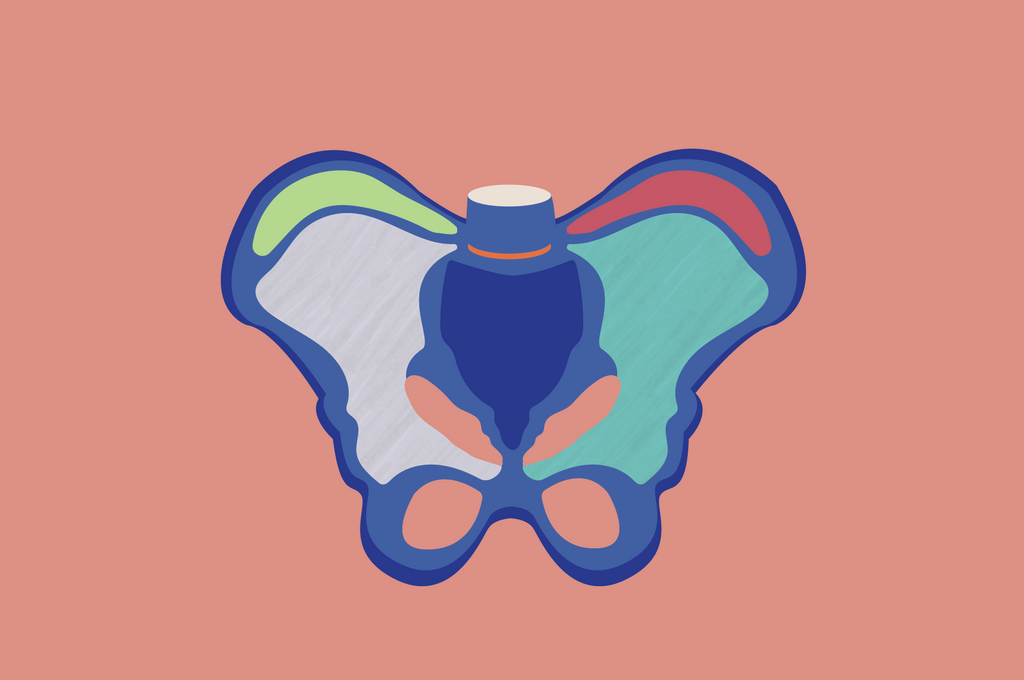Getting to Know Your Pelvic Floor Anatomy
- Share this article Copy to clipboard

This is the first installment of a two-part Q&A with Lindsey Vestal, owner of The Functional Pelvis and pelvic health OT.
The first thing most of us learn about pelvic health is that there’s so much we don’t actually know about our bodies. Many people go through one of the most taxing events your pelvic floor can experience — pregnancy and vaginal birth — and still don’t know much about pelvic health, other than the vague notion that they should try Kegels sometime. If this sounds like you, know that you’re not alone! For most people, this extremely important area of the body is a pretty big mystery.
Knowledge is power, so we started by asking Lindsey about the basics of pelvic health:
What exactly is the pelvic floor and what does it do?
The pelvic floor is a set of muscles that extend from our pubic bone back to our tailbone, and sit in a bowl shape at the bottom of our pelvis. The pelvic floor actually has three main functions. First is the elimination of waste, or controlling the closure and opening of your bowel and bladder. Next is organ support, acting as an awesome support base to hold up your essential organs. Last, but definitely not least, is sexual appreciation.
So, do orgasms involve pelvic floor muscles?
Yes! An orgasm is basically a Kegel— a series of little contractions. But sexual appreciation also involves muscles relaxing after contractions, just like any other muscle in the body. To be able to enjoy intercourse, we need those muscles to be able to relax and open, and, of course, to contract.
What does having strong pelvic floor muscles feel like?
We never want a muscle to be stuck or to be stagnant. Just like any other muscle in our body, we need to be able to contract a pelvic floor muscle — a Kegel in pelvic floor terminology — and we need to be able to relax and elongate it. The muscles in your pelvic floor need to be able to move through a range of motion, and if we’re stuck in a clenched Kegel position, or stuck in an elongated position, you’re not able to access the true strength and function of your pelvic muscles.
You can think about it like any other muscle. If you wanted to strengthen your bicep, you wouldn’t want to walk around all day with your bicep flexed. A truly strong muscle is one that can move easily through elongation and flection. If a muscle is only able to be elongated, it’s weak. If a muscle is only flexed, it’s weak. We want a muscle that can very easily move through all these positions.
Why does pelvic health matter?
Some of the pelvic floor muscles are actually deep hip muscles, so sometimes issues like lower back pain and hip pain are actually rooted in your pelvic floor, even though you aren’t feeling anything directly in the pelvic area. So, relaxing and strengthening the muscles in our pelvic floor can also help your hips and your back. Amazing, right?
The good news is that we’re able to relax and release some of those muscles from the outside. Doing some hip, butt, and inner thigh stretches can have a positive impact on your pelvic floor.
What do you wish every person knew about the pelvic floor?
The pelvic floor is at the center of the body, making it the core of our strength and resilience!
Pretty cool, if you ask us. Next up, Lindsey explains why Kegels may or may *not* work for you.
How much do you know about your pelvic floor?


